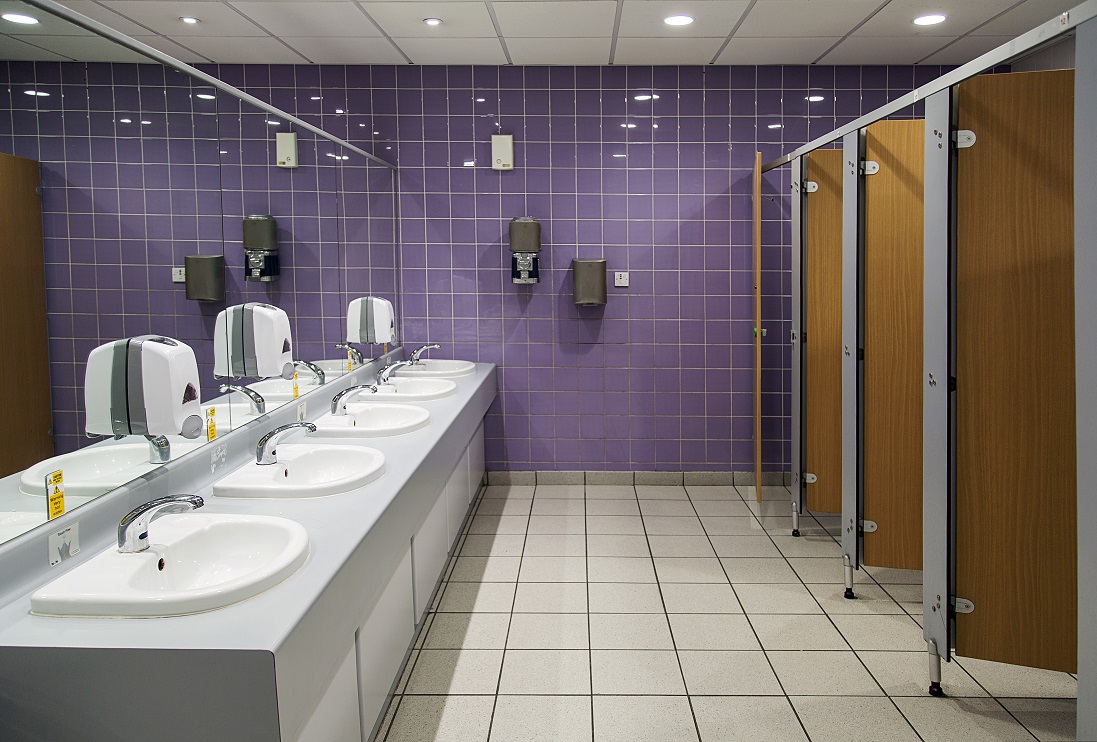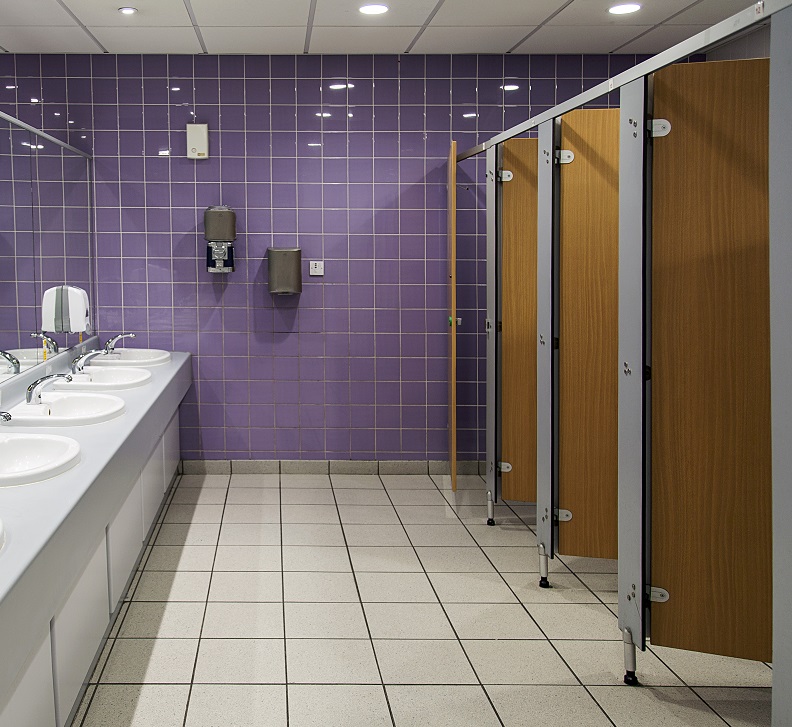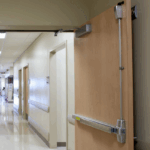 Back when I was a detailer for a distributor, I also handled Division 10 products – lockers, projection screens, cubicle curtain track, toilet accessories, toilet partitions, and more. Looking back, I can’t believe I didn’t make more mistakes since most of these products – along with doors, frames, and hardware – are so detailed. Tolerances are tight, and if something is a little off in the field, there’s a ripple effect.
Back when I was a detailer for a distributor, I also handled Division 10 products – lockers, projection screens, cubicle curtain track, toilet accessories, toilet partitions, and more. Looking back, I can’t believe I didn’t make more mistakes since most of these products – along with doors, frames, and hardware – are so detailed. Tolerances are tight, and if something is a little off in the field, there’s a ripple effect.
My job now focuses on door openings, and especially on the applicable code requirements, but I still receive questions about specialties – particularly toilet partitions. Here’s a recent Quick Question:
Are doors serving toilet stalls required to be self-closing?
Both the ADA standards and ICC A117.1 include requirements for toilet compartments in Chapter 6: Plumbing Elements and Facilities. If you don’t have a copy of the 2010 ADA Standards for Accessible Design, you can download it for free from the ADA.gov website. I’ve been meaning to write a post about the requirements pertaining to toilet partitions, but the LaForce blog did it for me: there’s a great post here on toilet compartment sizes and the requirements that address the stall doors. There is also an in-depth section of the ADA Guide from the US Access Board that covers toilet rooms.
The ADA standards and ICC A117.1 require doors serving accessible toilet compartments and ambulatory accessible compartments to have self-closing doors, as well as pull handles on both sides of the door near the latch. Here’s the section from the ADA standards that addresses accessible toilet compartments:
604.8.1.2 Doors. Toilet compartment doors, including door hardware, shall comply with 404 except that if the approach is to the latch side of the compartment door, clearance between the door side of the compartment and any obstruction shall be 42 inches (1065 mm) minimum. Doors shall be located in the front partition or in the side wall or partition farthest from the water closet. Where located in the front partition, the door opening shall be 4 inches (100 mm) maximum from the side wall or partition farthest from the water closet. Where located in the side wall or partition, the door opening shall be 4 inches (100 mm) maximum from the front partition. The door shall be self-closing. A door pull complying with 404.2.7 shall be placed on both sides of the door near the latch. Toilet compartment doors shall not swing into the minimum required compartment area.
ICC A117.1 has the same requirements (self-closing door with pulls both sides) for wheelchair accessible compartments and ambulatory accessible compartments. A117.1 does not establish which bathrooms need to be accessible – that information is in the International Building Code (IBC). The 2018 IBC states (with some exceptions):
1109.2 Toilet and bathing facilities. Each toilet room and bathing room shall be accessible. Where a floor level is not required to be connected by an accessible route, the only toilet rooms or bathing rooms provided within the facility shall not be located on the inaccessible floor. Except as provided for in Sections 1109.2.2 and 1109.2.3, at least one of each type of fixture, element, control or dispenser in each accessible toilet room and bathing room shall be accessible.
Keeping in mind that toilet stalls are not really within my everyday area of expertise, my interpretation is that the IBC would require each multi-stall restroom to have a wheelchair accessible stall and possibly an ambulatory accessible stall. The ADA standards require the additional ambulatory accessible compartment when the room has more than 6 stalls/urinals. Both types of accessible stalls would need self-closing doors with pulls on both sides, as well as complying with the minimum clear width, 5-pound maximum opening force, maneuvering clearance, etc. Self-closing doors are not mandated on the stalls that are not required to be accessible.
You need to login or register to bookmark/favorite this content.






Does the code apply to a single occupancy toilet be self-closing? How about a restroom with single occupancy toilets fabricate of stud wall with drywall with a hollow metal frame and door of wood or hollow metal?
Hi Fred –
I did not see an accessibility requirement for a self-closing door on an individual restroom that is compliant for maneuvering clearance, BUT – I have seen requirements for self-closing restroom doors in other codes – like the Board of Health requirements. If it’s a multi-stall restroom with stalls made out of standard walls and doors, I think those would be considered stalls and that the accessible stalls would be subject to the requirements I cited in the blog post. It’s a fine line.
– Lori
Lori, My wife was in a wheel chair for about 3 years . My best suggestion ,rent or get a wheelchair and set in it for a day ,I promise that you will be very amazed at the problems of rest room doors , compartments and fighting doors with closers . You will be amazed at how much at how much more attention and thought you will gain that is not in the book , that we take for granted .
Thanks Bob. I can only imagine how eye-opening this would be.
– Lori
We did this back in 1989 to show the Public Works Canada officials why we were so stubborn with the hardware and swing of all doors that were installed on all Federal Government Buildings in Ottawa, Ontario. As well as all of our other customers that were looking for an Accessible door system.
Are they allowed to be locked or latched from the inside without the use of a tool, key or special knowledge?
Hi Donnie –
Yes, these doors can be locked or latched but would need to comply with the code requirements for egress and accessibility.
– Lori